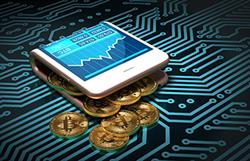Blockchain Tokenization Missteps Can Have Devastating Consequences
KPMG titled a blockchain technology survey for retailers, Blockchain-Enabled Digital Tokenization Is Poised to Transform Commerce. But what, exactly, is being transformed? This can be a tricky area because the misapplication of this technology can lead to irreversible results.
 By Kara Haas, CPA, CITP, CFE
By Kara Haas, CPA, CITP, CFE
“Tokenize the world” is a blockchain theme that, on the surface, appears to be a genuine attempt to drive global growth across generations. KPMG thought so much of blockchain technology that it titled a 2019 survey for retailers, Blockchain-Enabled Digital Tokenization Is Poised to Transform Commerce.1 But what, exactly, is being transformed? The truth is the misapplication of the technology can lead to irreversible results.
Consider Alice, a fictitious former client. Alice owns a chain of general stores and wanted to expand using blockchain. She put her entire business on blockchain: its loyalty program, in-house accounts, bitcoin ATMs installed at retail locations, added a stablecoin, and has plans for a public offering on the New York Stock Exchange. In the decentralized spirit of blockchain, she rebranded her store as DeGenEral. In this blog post, I discuss the particular catalyst for Alice and I parting company: the tokenization of her loyalty program.
The database for Alice’s loyalty program had been accessible by stores nationwide via contact information rather than a plastic card. Patrons earned points and discounts for future purchases at any physical or online store. The objective of the loyalty program was to encourage additional purchases.
To tokenize the program, Alice turned to the Ethereum blockchain. She named it General Loyalty Dollars and it had a ticker symbol of GLD.
Tokenizing Loyalty
 The loyalty program was thus transformed from a merchant discount to a tradable, bearer instrument redeemable for fiat (government back currency, such as U.S. dollars) at locations beyond DeGenEral. A bank or other retail store would not accept GLD; Alice had to rely on thousands of cryptocurrency exchanges across the globe to facilitate trading of GLD for other cryptocurrencies such as Bitcoin (BTC) or Ethereum (ETH). Participants traded GLD for BTC and converted it to U.S. dollars at an exchange with a fiat off-ramp, such as Coinbase.
The loyalty program was thus transformed from a merchant discount to a tradable, bearer instrument redeemable for fiat (government back currency, such as U.S. dollars) at locations beyond DeGenEral. A bank or other retail store would not accept GLD; Alice had to rely on thousands of cryptocurrency exchanges across the globe to facilitate trading of GLD for other cryptocurrencies such as Bitcoin (BTC) or Ethereum (ETH). Participants traded GLD for BTC and converted it to U.S. dollars at an exchange with a fiat off-ramp, such as Coinbase.
Brand awareness increased on a global scale, but as a method to acquire cryptocurrency and dollars, not for the store’s merchandise – the original intent of the loyalty program. Demand for GLD did not translate to increased retail sales. Once a token is created, the most logical way for it to garner a perceived value is through trading volume. To increase trading volume, Alice needed to list GLD on an exchange. Alice found an exchange in the “crypto-friendly” jurisdiction of Malta to list GLD for a fee of $100,000 and a supply of GLD to be used as giveaways in a trading competition.
The incentive to earn GLD by purchasing merchandise declined as incentives to participate in trading competitions and solicit friends for accounts on unknown exchanges increased. In the end, blockchain transformed a store coupon for merchandise into a method to obtain U.S. dollars because actual dollars were deemed more valuable than the promise of a discount on an unknown item. Most of the individuals trading GLD had no intent of ever patronizing DeGenEral.
In the short-term, DeGenEral’s consumers enjoyed the same products and selection. In time, though, the cost of maintaining the token depleted resources needed to maintain the core business. Alice had to take a loan for the $100,000 listing fee. To repay the loan, she contemplated selling her founder’s supply of GLD and selling off retail inventory at a deep discount. When she sold GLD, it caused downward pressure on the token price. The sale of retail inventory was near cost. Both options depleted funds needed to grow.
When contemplating new technologies – particularly blockchain and its norm-busting potential – it is important to consider how their use can transform the business model and accompanying compliance. In this case, a mobile application may have generated substantive results congruent with the original intent. Instead, Alice created a financial instrument subject to the rules and regulations of an entirely different sector.
1 KPMG, Blockchain-Enabled Digital Tokenization Is Poised to Transform Commerce
Kara R. Haas, CPA, CITP, CFE, is a speaker, author, and consultant for the independent retail industry. She can be reached at kara@krhpa.com.
Sign up for weekly professional and technical updates from PICPA's blogs, podcasts, and discussion board topics by completing this form.
PICPA Staff Contributors
Disclaimer
Statements of fact and opinion are the authors’ responsibility alone and do not imply an opinion on the part of PICPA officers or members. The information contained in herein does not constitute accounting, legal, or professional advice. For professional advice, please engage or consult a qualified professional.






